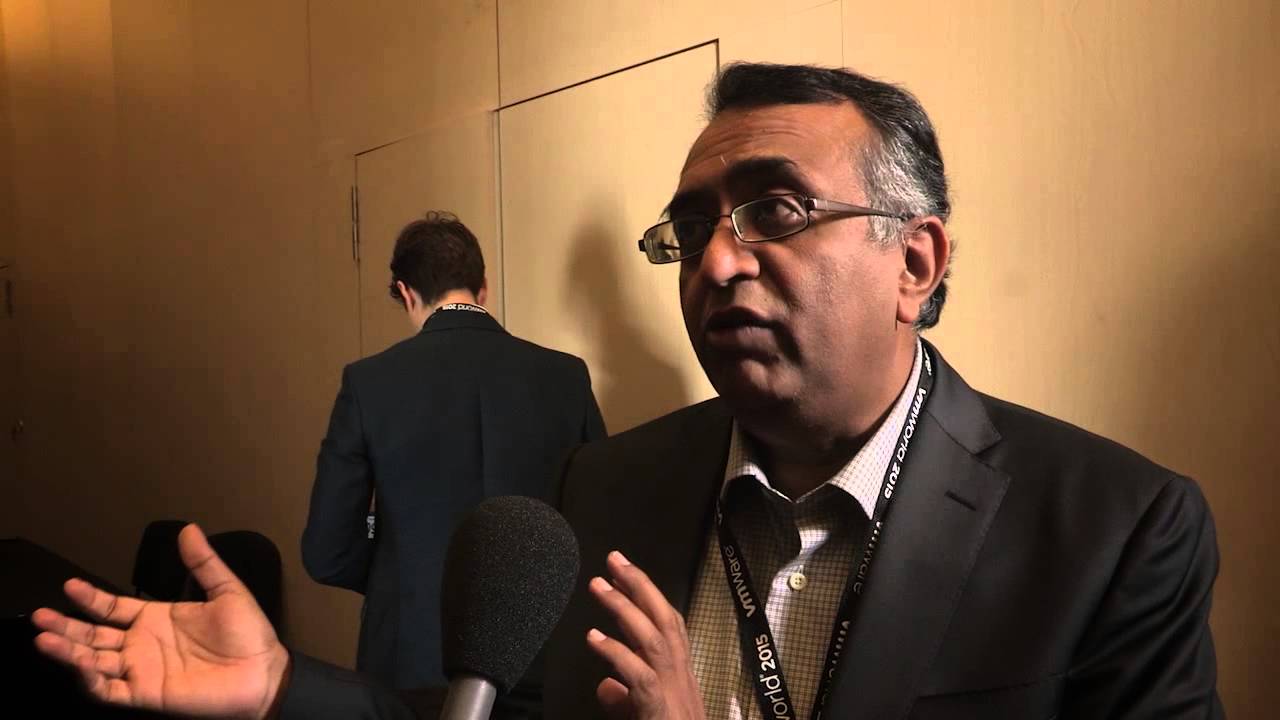 CLOUD
CLOUD
 CLOUD
CLOUD
 CLOUD
CLOUD
Virtualization giant VMware Inc. beat earnings and revenue estimates in its second quarter and raised profit and margin forecasts for the third quarter and full year.
Earnings of $739 million, or $1.75 per share, beat consensus estimates by 11 cents, while revenue of $3.14 billion rose 9% and slightly beat expectations of $3.11 billion.
Executives expressed satisfaction with 23% growth in the company’s closely watched subscription and software-as-a-service revenue line, to $776 million. However, investors expected better, with consensus estimates coming in at $790 million. As a result, VMware stock tumbled more than 6% in after-hours trading.
Net income in the quarter fell 3% from the same quarter last year, but the decline was expected. Operating income also fell about 3%, to $924 million.
Despite the mixed results, executives expressed confidence that the company is on the right strategic path. VMware is entering the third stage of its evolution, said Raghu Raghuram (pictured), the company’s newly appointed chief executive.
“Chapter one was as a virtualization company. Chapter 2 was to expand that into the private cloud and software-defined data center,” he said. “Chapter 3 is the multicloud chapter where we are well-differentiated because we have the trust of the customer.”
The CEO pointed out that VMware is the “only large vendor that has strategic partnerships with all the major hyperscale [cloud providers] and our portfolio is more comprehensive and broader than anybody else’s.”
One result that surprised even VMware leadership was a 3% increase in license sales coming on top of a 20% jump in the data center business the previous quarter. “Customers took a large slightly larger share of perpetual licenses than expected in the quarter,” said Chief Financial Officer Zane Rowe.
Conventional wisdom for the past couple of years has been that perpetual license sales would steadily decline across the board, but Forrester Research Inc. Research Director Glenn O’Donnell said the growth isn’t surprising in hindsight.
“Tech spending got crucified last year for a broad swath of vendors,” he said. “All are reporting good year-over-year increases now because the denominator is so lousy. This is a reflection of pandemic-related anomalies in tech spending trends.”
O’Donnell said because of the financial anomalies the pandemic created, it’s more instructive to look at 24-month earnings instead of just one year. He pointed to a two-year analysis of VMware parent Dell Technologies Inc. revenues that showed that its data center business was slammed last year but the declines were offset by gains in personal computer sales. “Other data companies like Cisco and Hewlett-Packard Enterprise show similar patterns,” he said.
The biggest contributors to growth in VMware’s subscription portfolio were its Cloud Provider Program, application modernization business, end-user computing product line, Carbon Black security service and VMware Cloud on Amazon Web Services Inc. infrastructure, a line that grew 80% year-over-year, Rowe said. Cloud management revenues climbed 30%.
“We are very bullish about our SaaS and subscription revenue,” Raghuram said. “It’s a big focus of mine.” He reiterated plans to make all of the company’s licensed software products, including the vSphere hypervisor, available on a subscription basis.
“Over the next year we expect our subscription and SaaS business to accelerate,” he said, adding that customers that convert to subscription models are easier to cross-sell and upsell because the burden of installation is lifted from their shoulders.
Three months into his job, the new CEO has yet to articulate “what his philosophy is on VMware’s mission,” O’Donnell said. “I haven’t yet heard that with any clarity.”
Although Raghuram didn’t outline a broad vision during the analyst call, he did say that based on conversations with nearly 200 customers over the past 90 days, he has concluded that “customers are looking at how to run their IT over the next decade, and the distributed workforce is one pillar and multicloud is another” he said. “We’re industry-neutral with a great set of cloud partners. We are uniquely set up to deliver that that.”
Executives touched only lightly on the company’s impending spinoff from Dell, saying that the transaction is still on target to be completed this year and that VMware sees only upside in the separation. The plans being put in place provide for “increased strategic and operational flexibility while maintaining a strong partnership with Dell,” Rowe said.
Support our mission to keep content open and free by engaging with theCUBE community. Join theCUBE’s Alumni Trust Network, where technology leaders connect, share intelligence and create opportunities.
Founded by tech visionaries John Furrier and Dave Vellante, SiliconANGLE Media has built a dynamic ecosystem of industry-leading digital media brands that reach 15+ million elite tech professionals. Our new proprietary theCUBE AI Video Cloud is breaking ground in audience interaction, leveraging theCUBEai.com neural network to help technology companies make data-driven decisions and stay at the forefront of industry conversations.